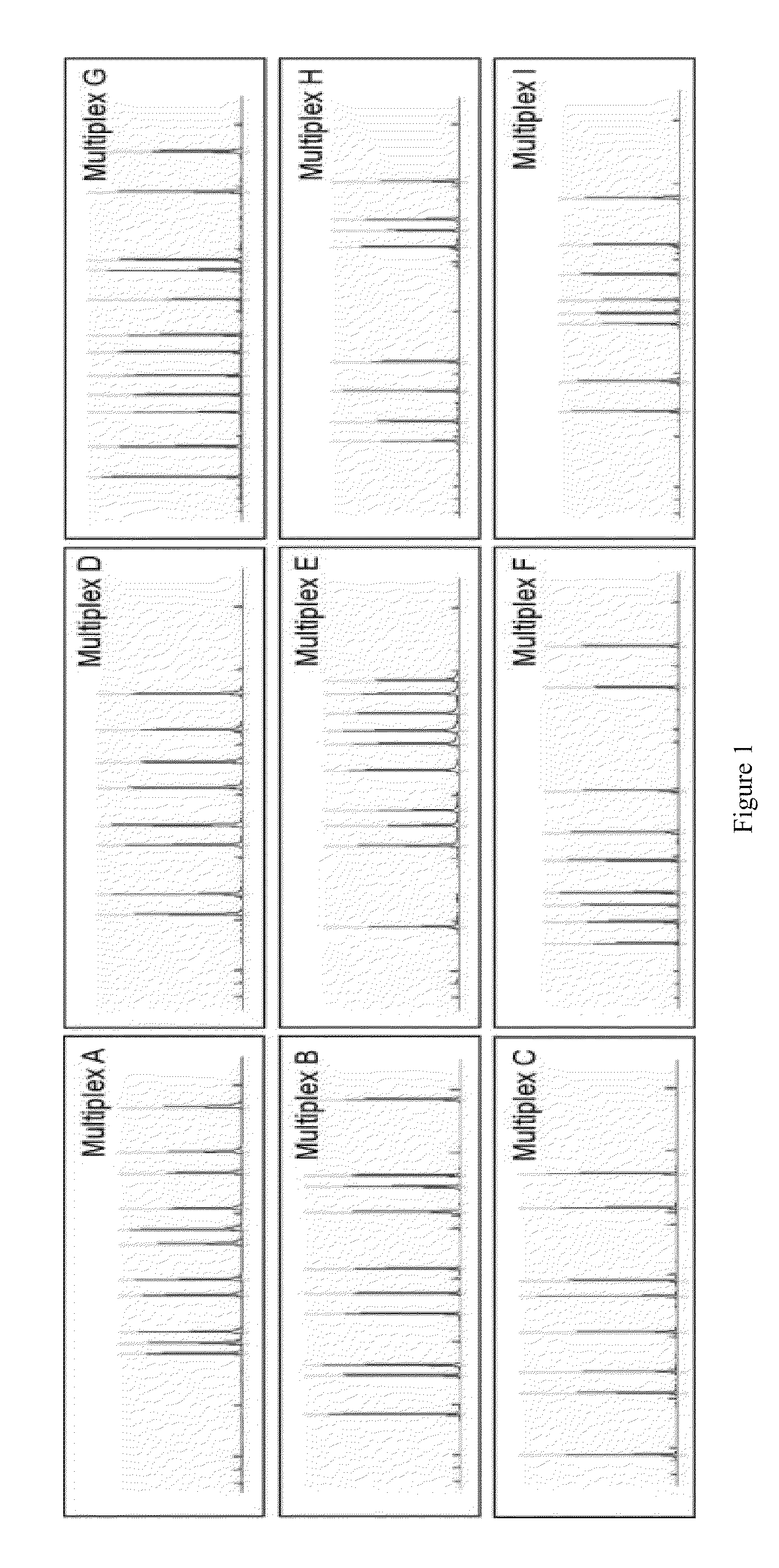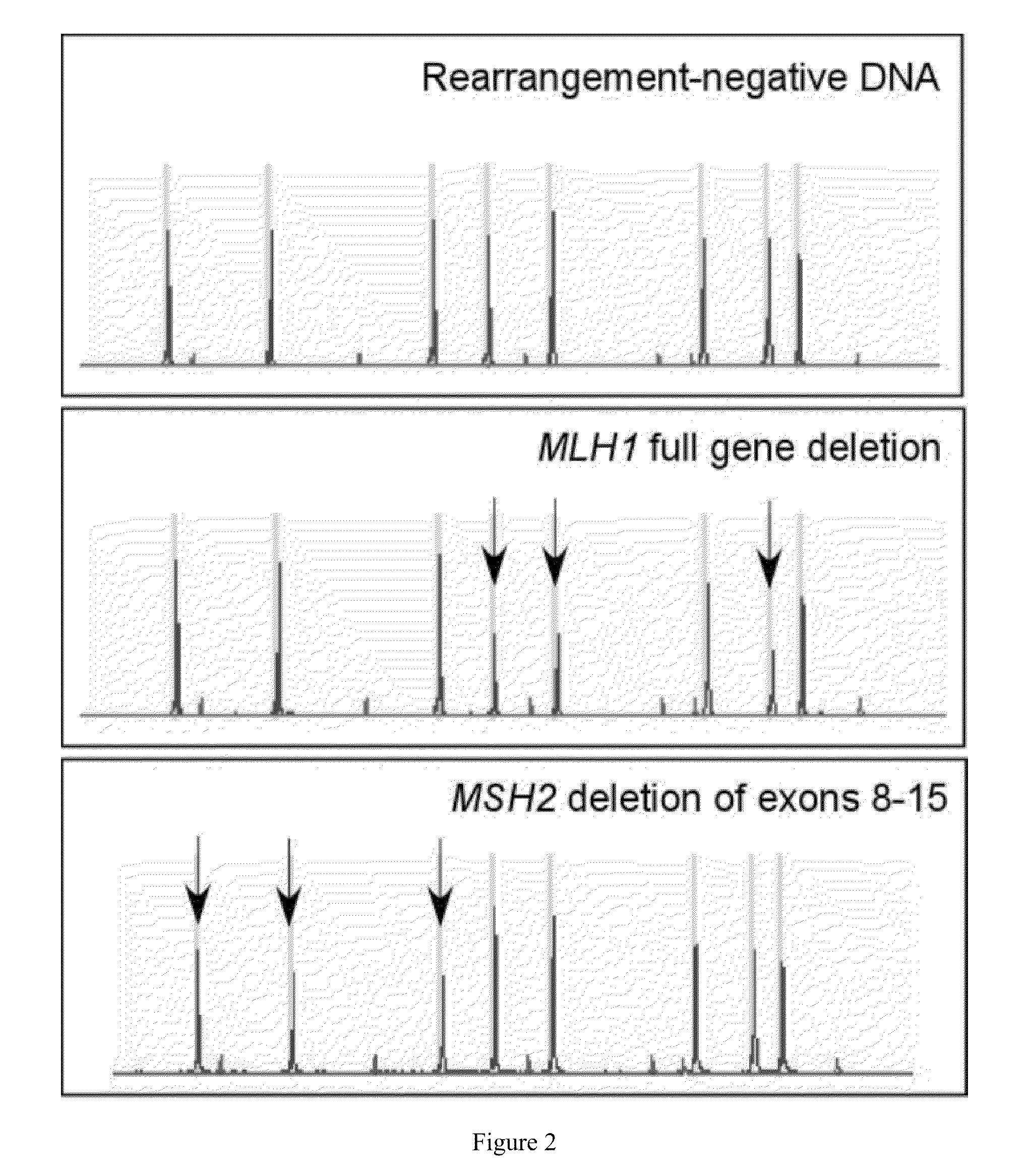Method of detecting large genomic rearrangements
a genomic rearrangement and large-scale technology, applied in the field of gene testing, can solve the problems of small percentage of deleterious mutations being large-scale rearrangements, and it is not easy to adapt southern blot to high-throughput clinical lab settings
- Summary
- Abstract
- Description
- Claims
- Application Information
AI Technical Summary
Benefits of technology
Problems solved by technology
Method used
Image
Examples
example 1
[0080]Hereditary non-polyposis colon cancer (HNPCC) is caused by germline mutations in the mismatch repair genes MLH1, MSH2, MSH6 and PMS2. HNPCC patients have ˜80% increased risk of colon cancer, and elevated risk for cancers of the endometrium, ovary, stomach, small intestine and upper urinary tract. Molecular genetic testing in HNPCC families showed that ˜90% of cases are attributed to MLH1 and MSH2, 7-10% to MSH6, and <5% to PMS2. The majority are point mutations detectable by sequencing; however, approximately 5% and 20% of mutations in MLH1 and MSH2, respectively, are large rearrangements that require other detection techniques such as Southern blot or multiplex ligation-dependent probe amplification (MLPA™). Our laboratory had previously developed and implemented a quantitative multiplex PCR (QMPCR) endpoint assay for clinical testing for large rearrangements in the BRCA1 and BRCA2 genes. We have developed a similar assay for the MLH1 and MSH2 genes in HNPCC which we refer to...
example 2
1. BART (BRCA1 / 2 Rearrangement Test) Assay and Process Features
[0090]We used existing and specifically generated BRCA1 and BRCA2 sequence data to avoid common polymorphisms in BART primer design. BART multiplex PCR reactions were designed to interleave BRCA1 and BRCA2 amplicons avoid data artifacts involving contiguous gene regions. BART multiplex PCR reactions were designed to group 2 sets of GC-rich amplicons to optimize reactions using GC-rich PCR chemistry. Relative dosage of individual amplicons was assessed using analytical software tool developed to assess deletion or duplication mutations within BRCA1 and BRCA2. The software provides probability scores for mutation positive calls. BART samples are run in an automated manner with barcode tracking throughout process. Positive samples are re-queued using BART for confirmatory testing.
[0091]Samples that test positive for deletion by BART are checked for BRCA1 / 2 sequences corresponding to the relevant BART primer binding sites. T...
PUM
 Login to View More
Login to View More Abstract
Description
Claims
Application Information
 Login to View More
Login to View More - R&D
- Intellectual Property
- Life Sciences
- Materials
- Tech Scout
- Unparalleled Data Quality
- Higher Quality Content
- 60% Fewer Hallucinations
Browse by: Latest US Patents, China's latest patents, Technical Efficacy Thesaurus, Application Domain, Technology Topic, Popular Technical Reports.
© 2025 PatSnap. All rights reserved.Legal|Privacy policy|Modern Slavery Act Transparency Statement|Sitemap|About US| Contact US: help@patsnap.com



